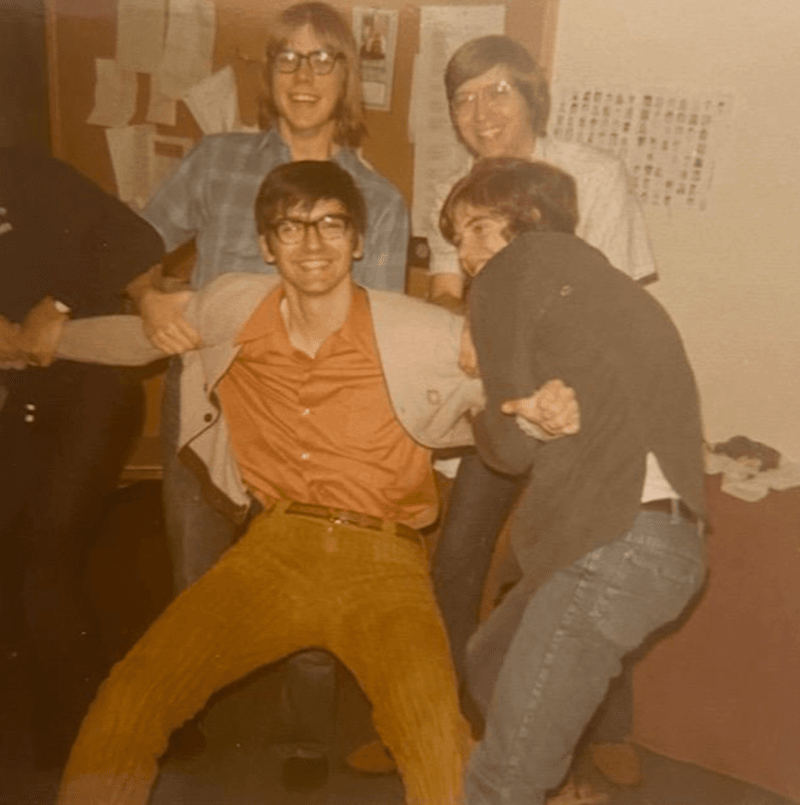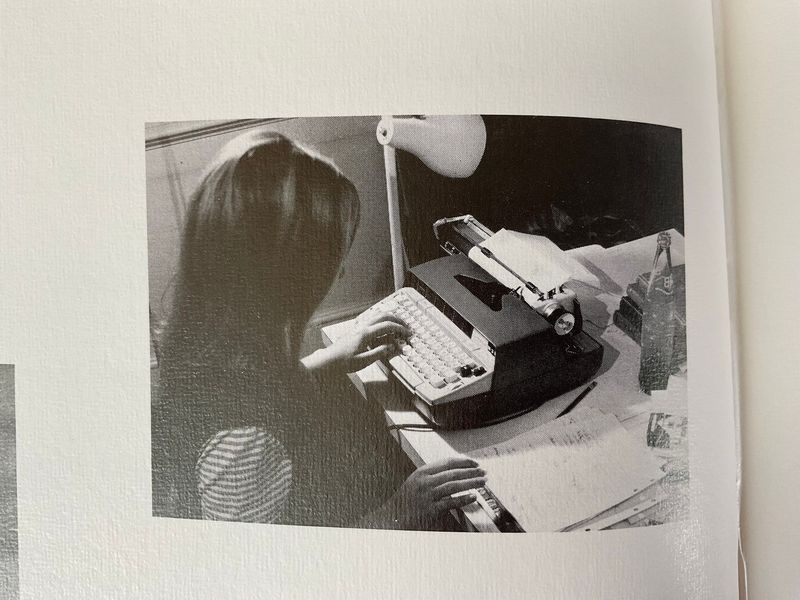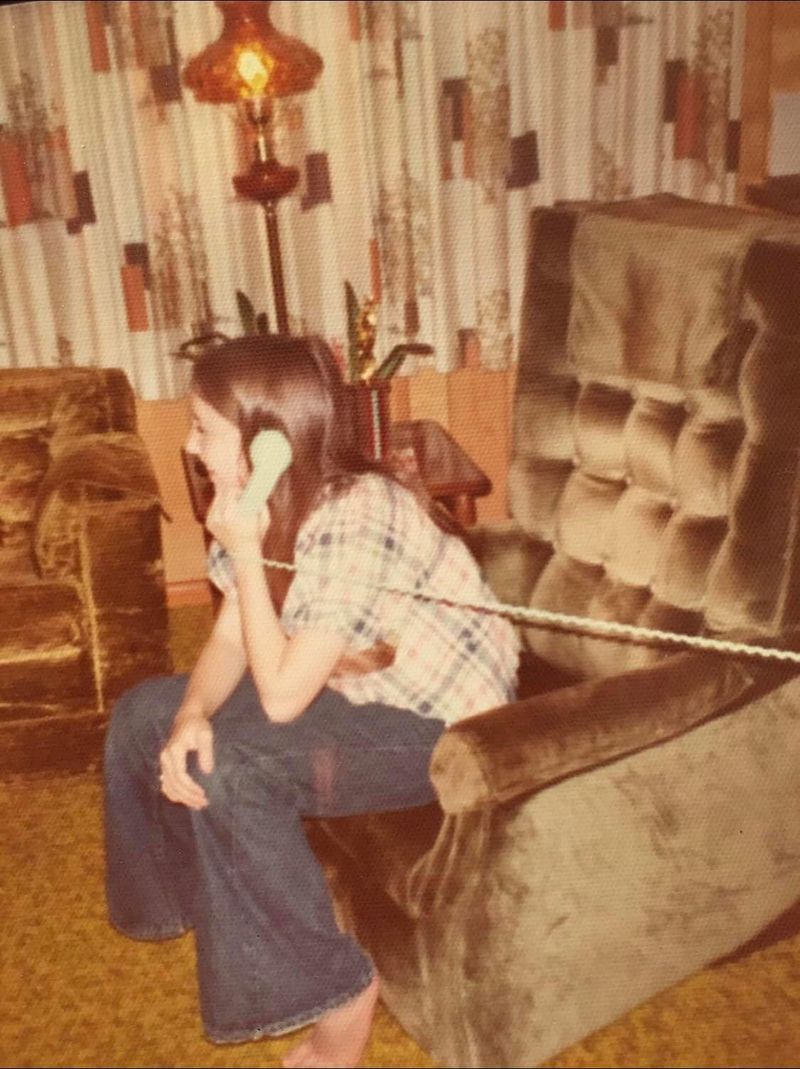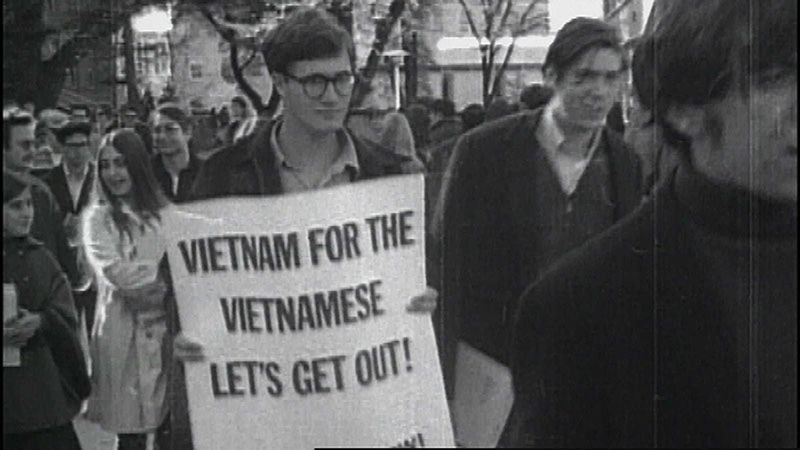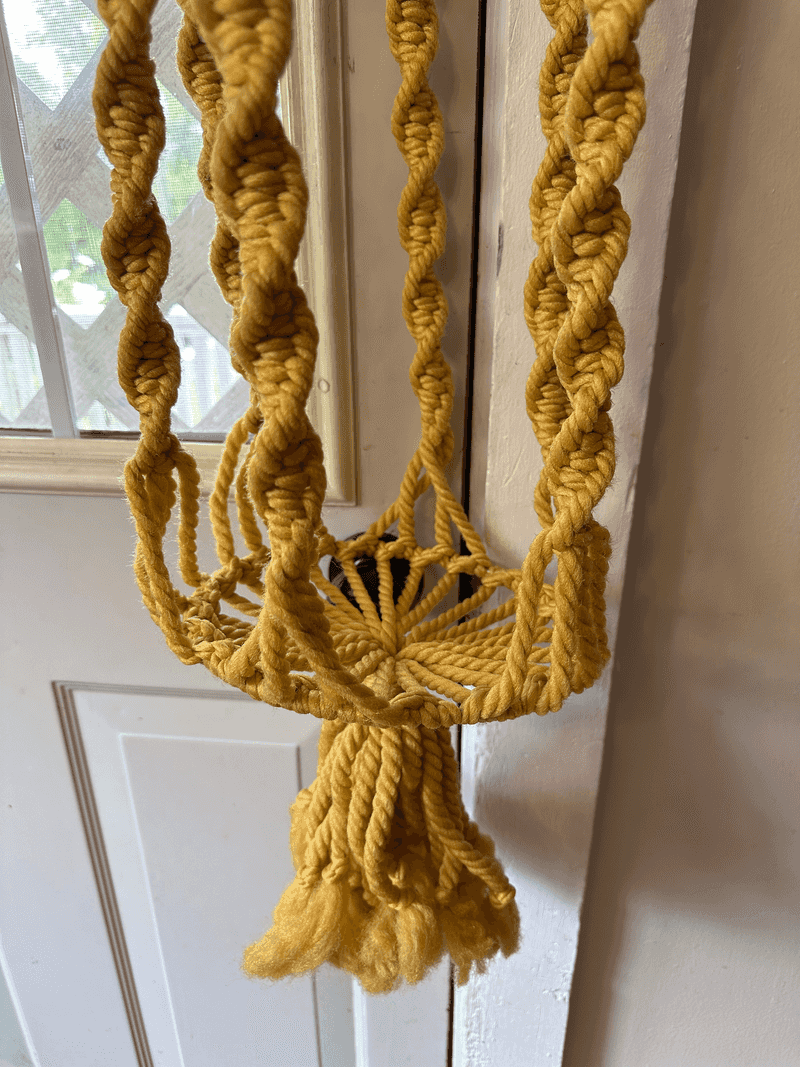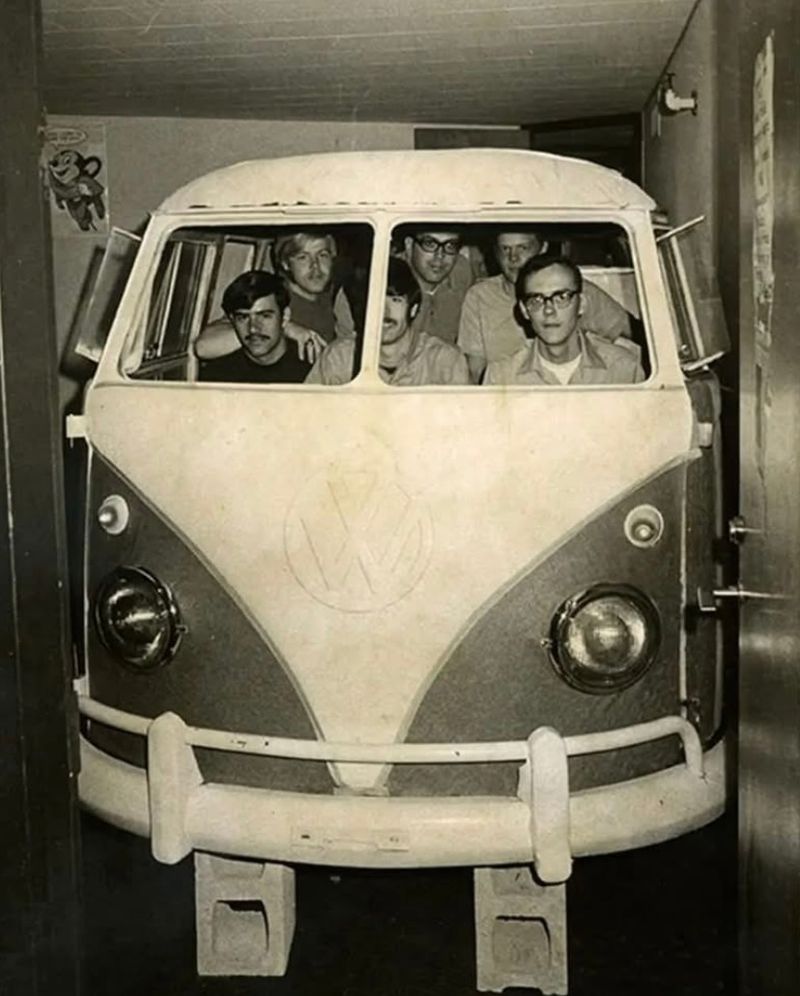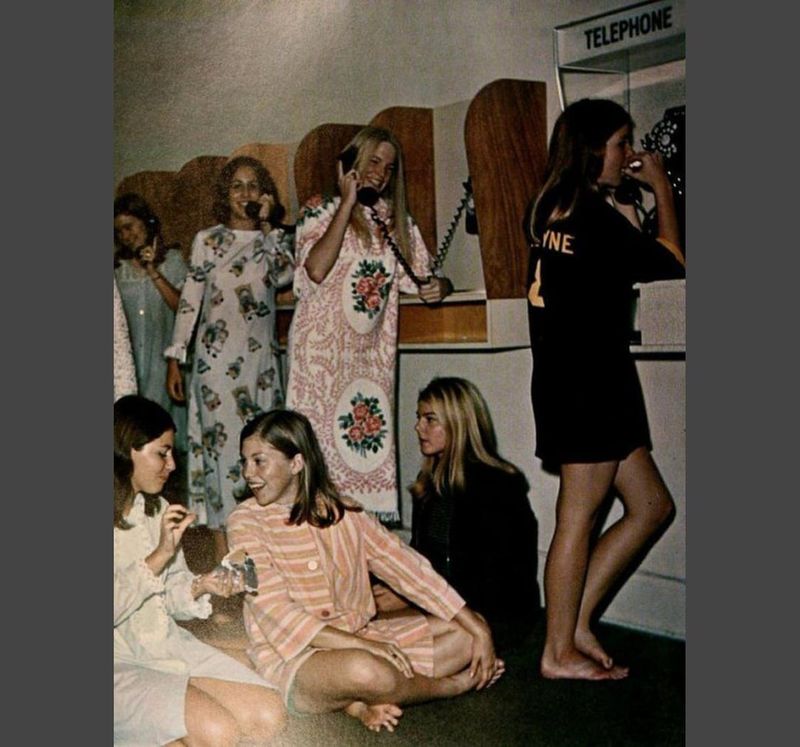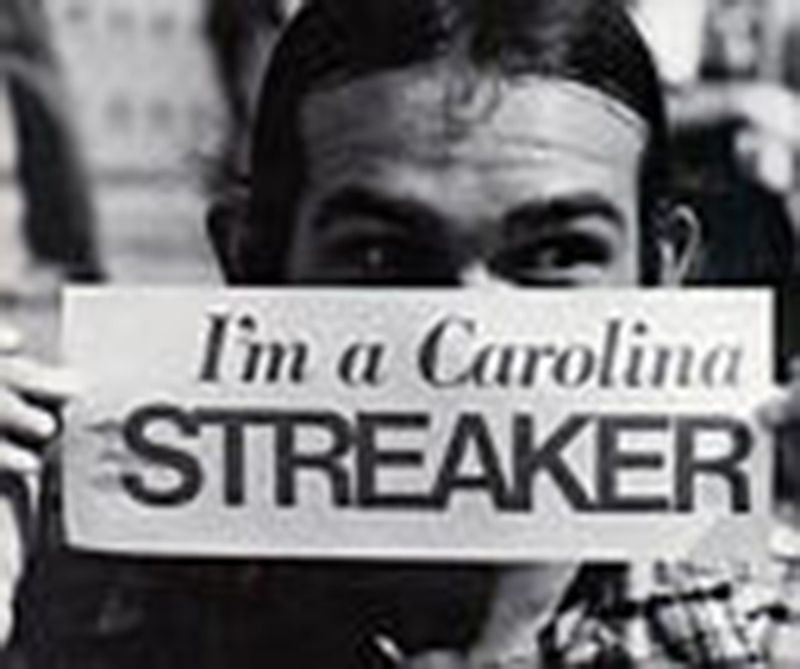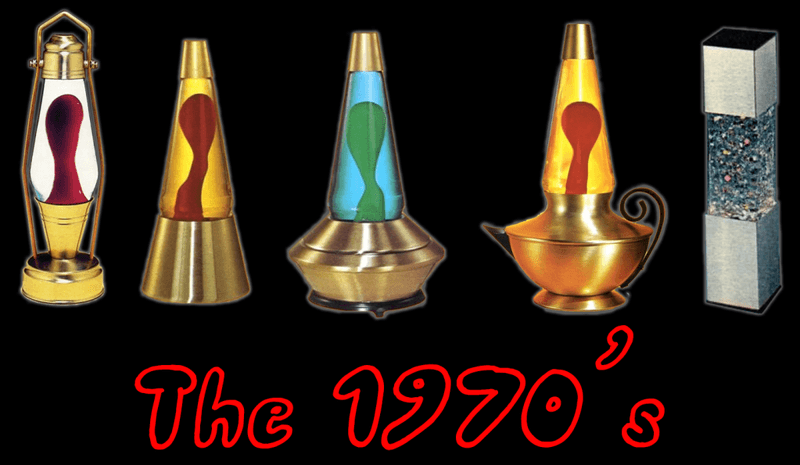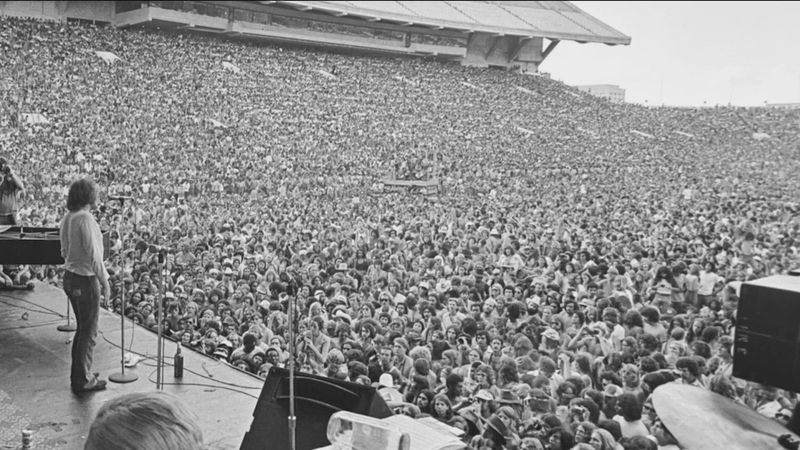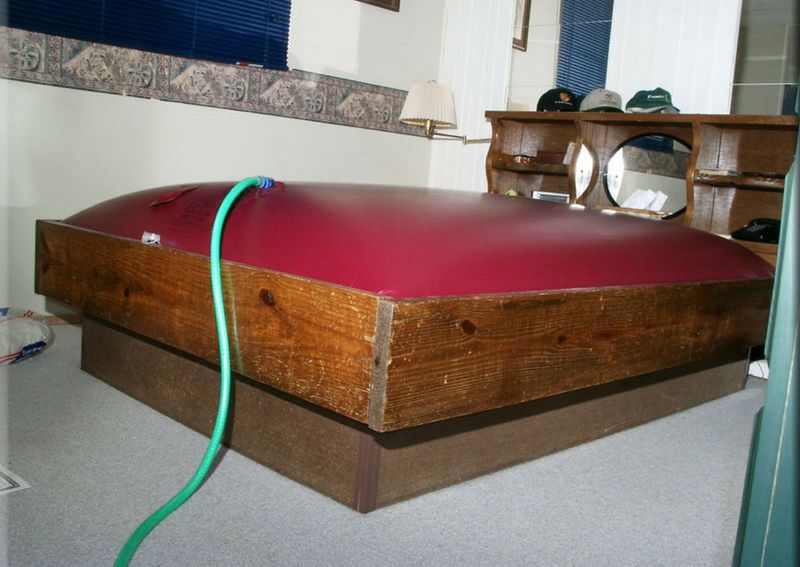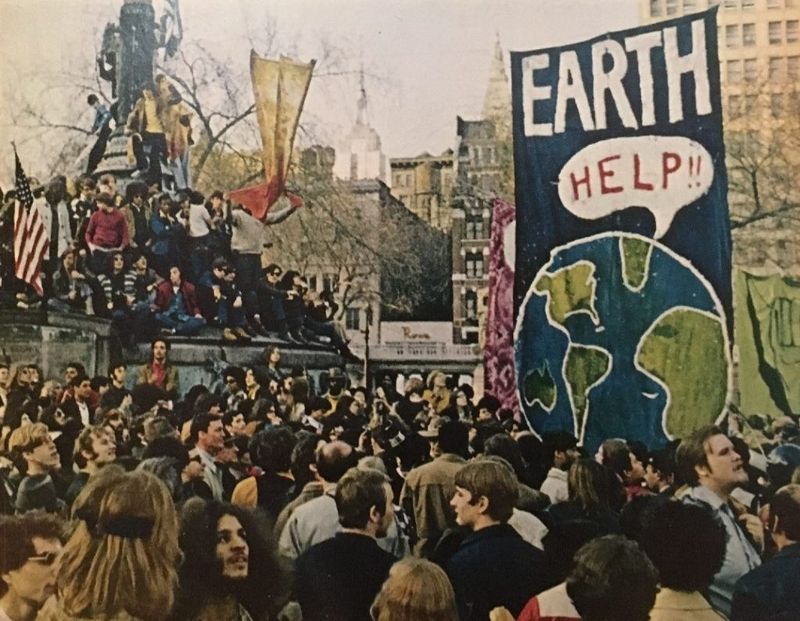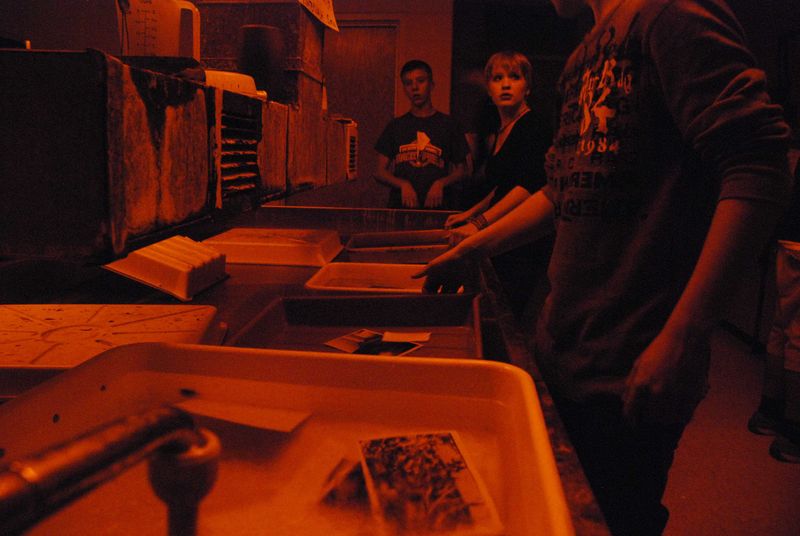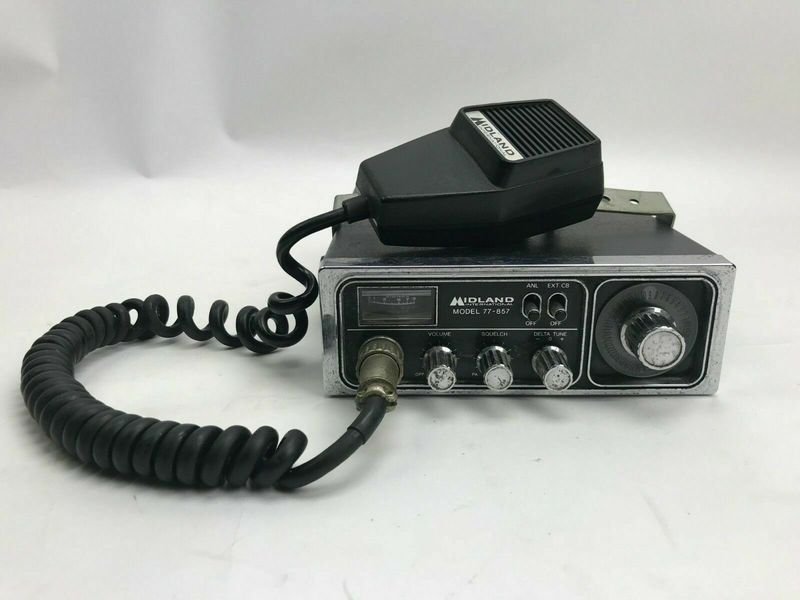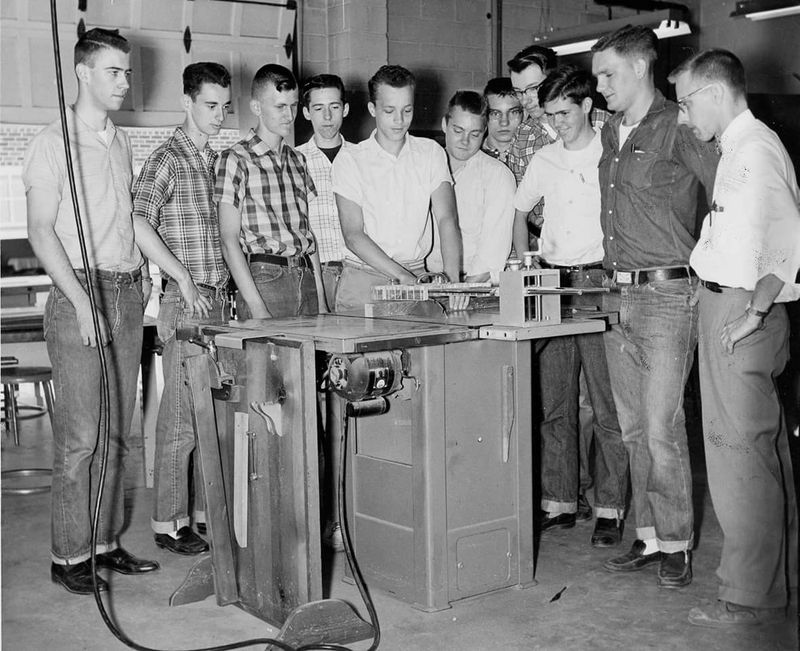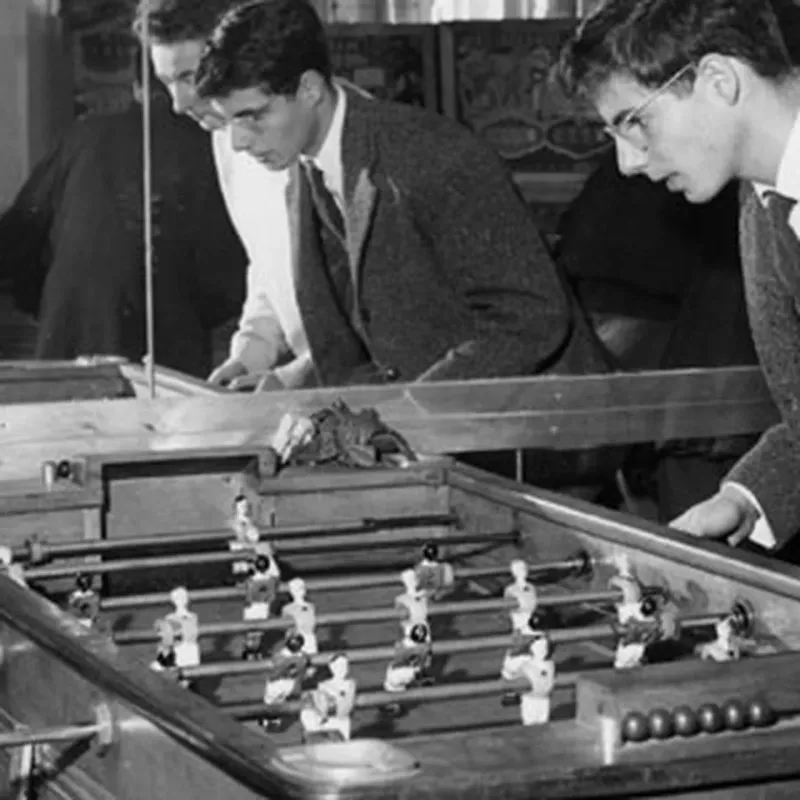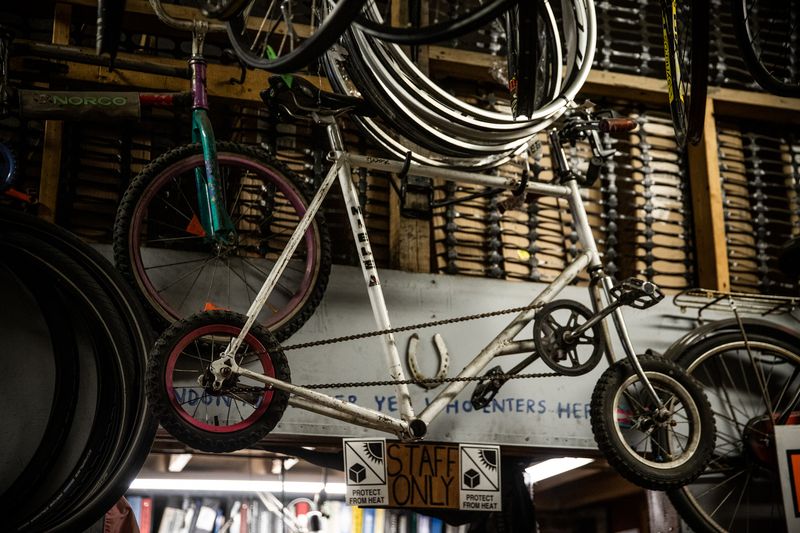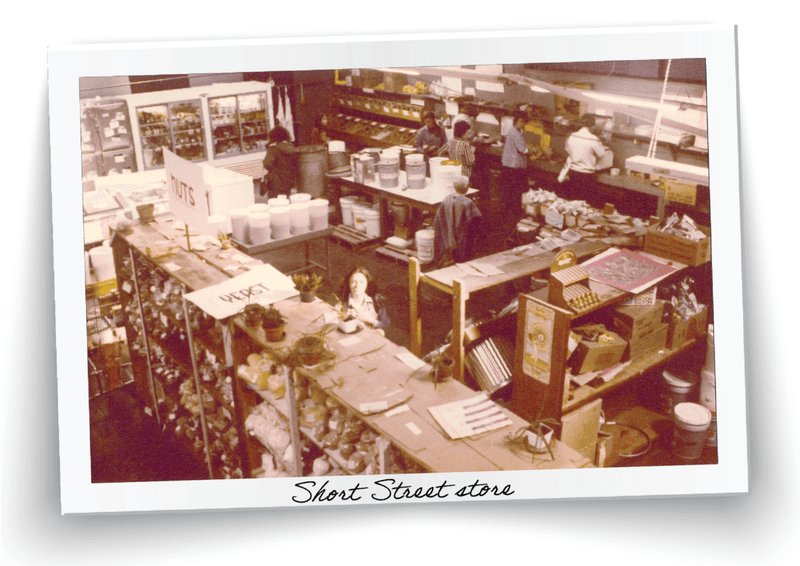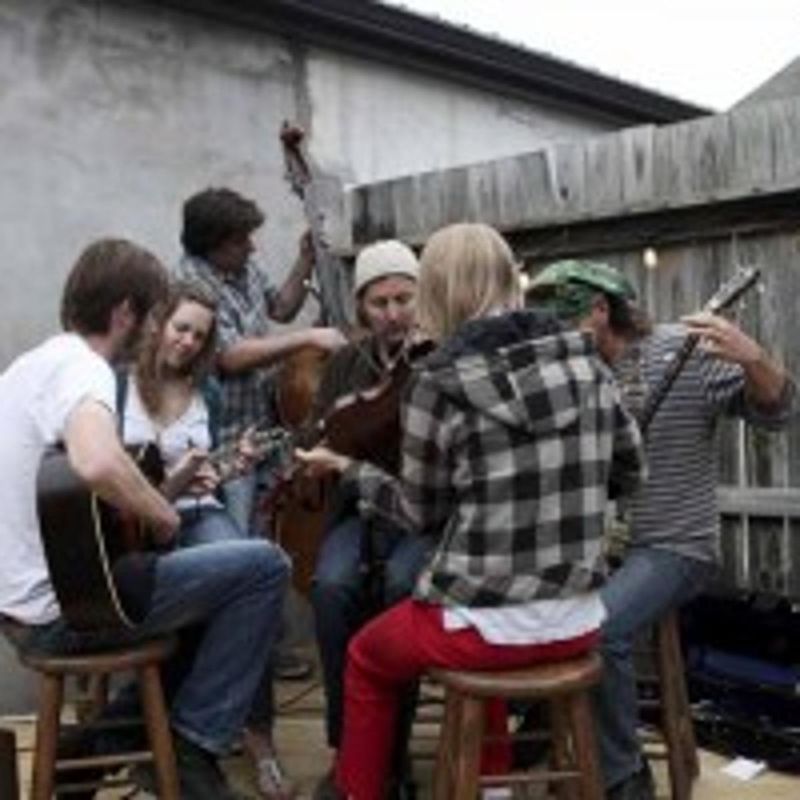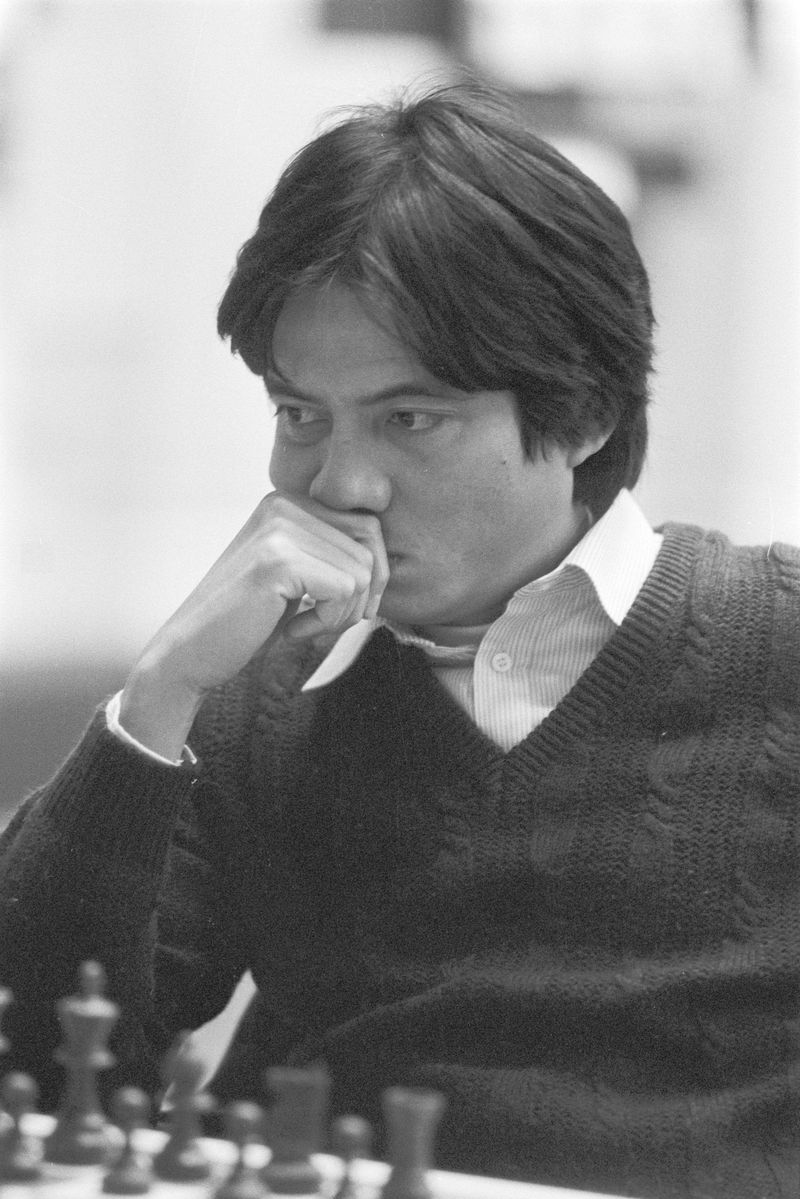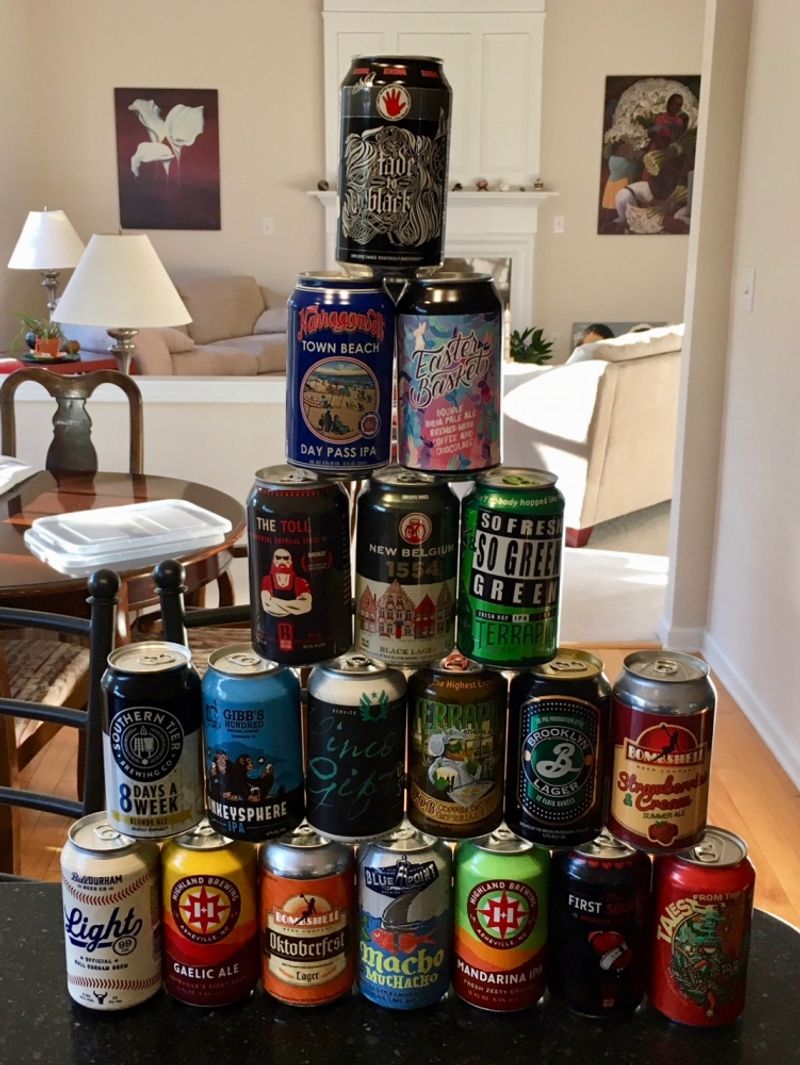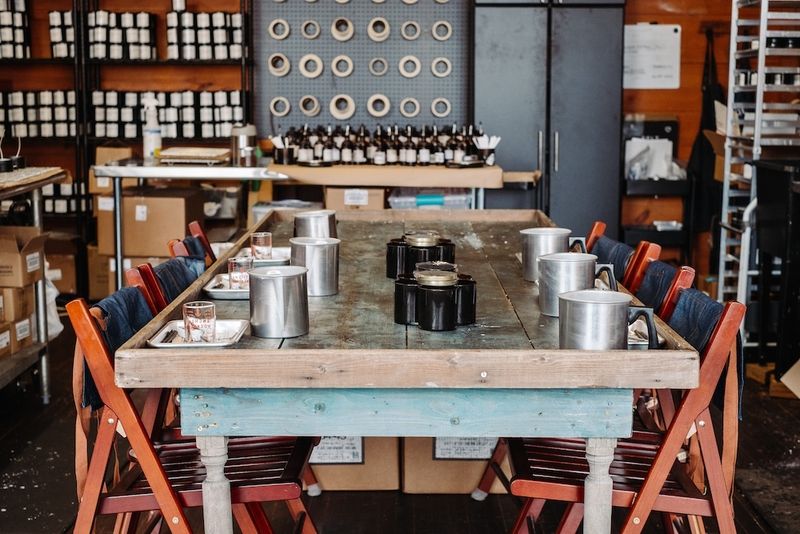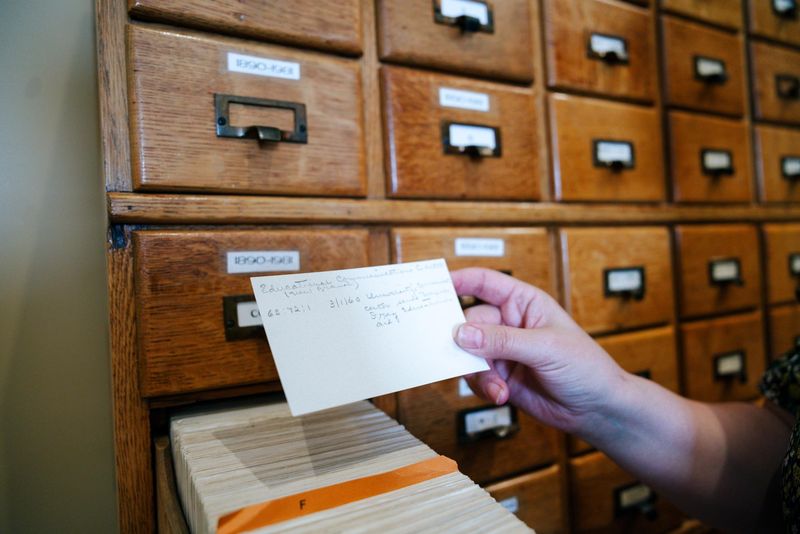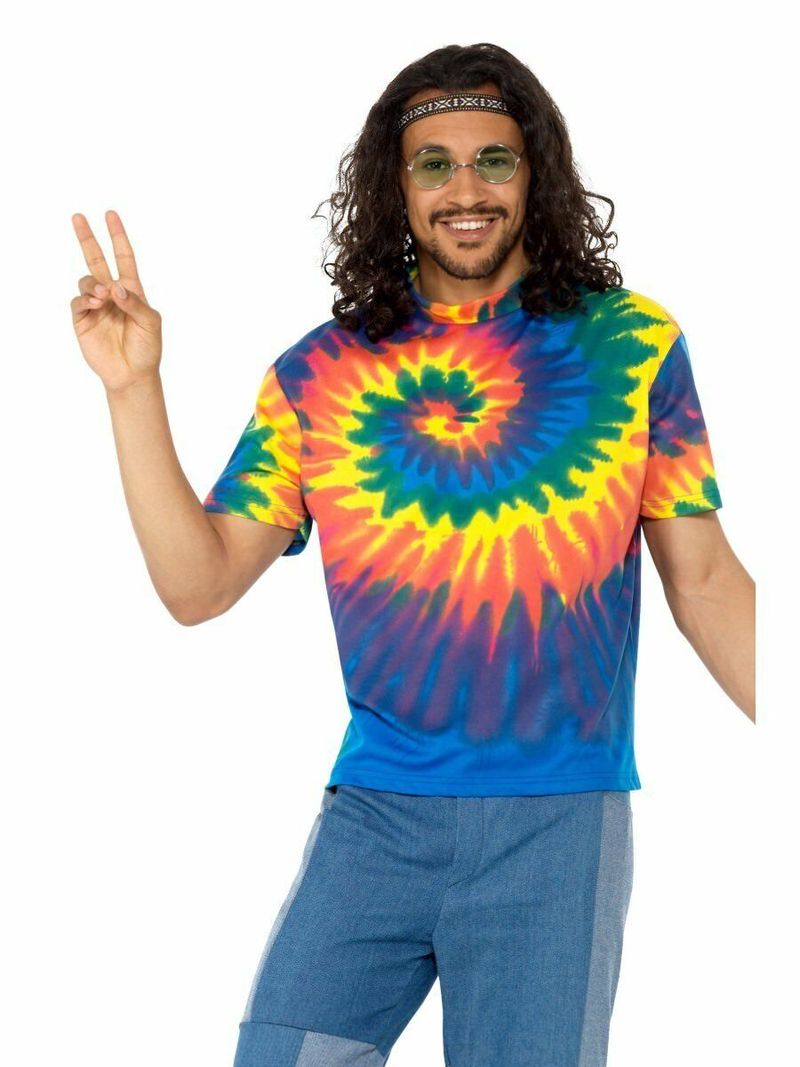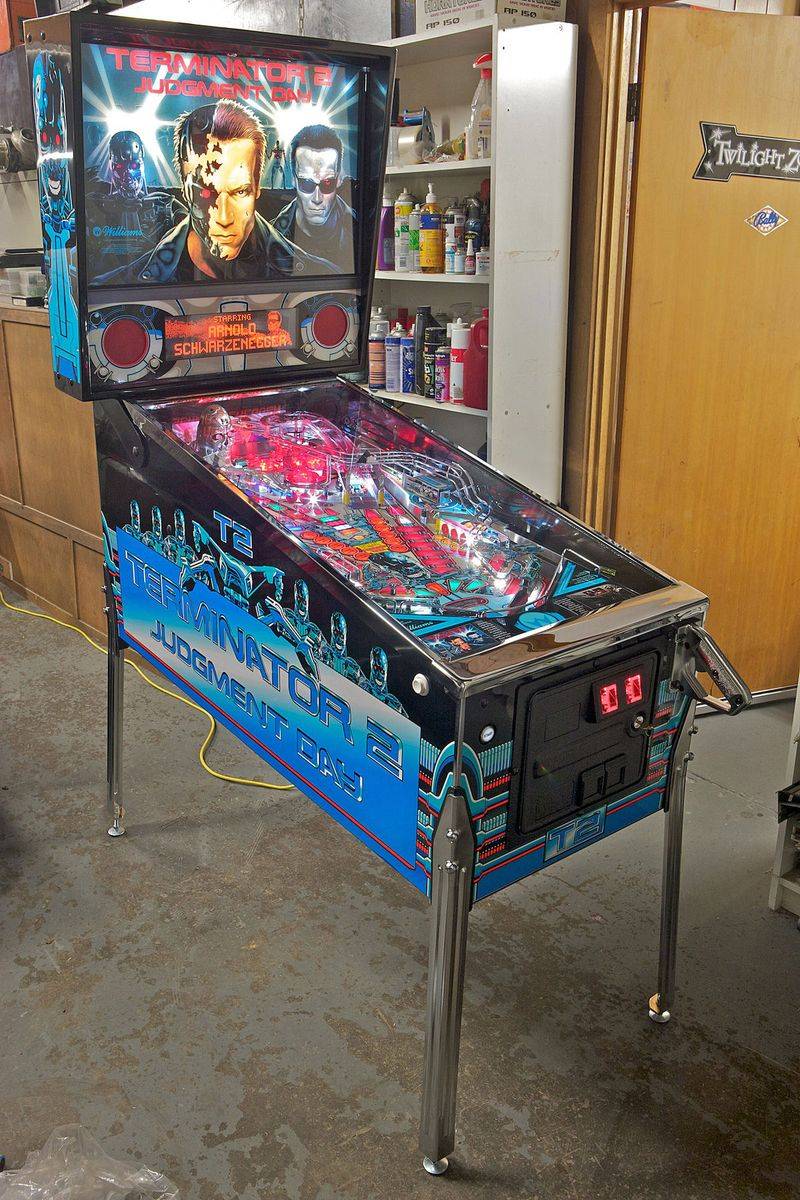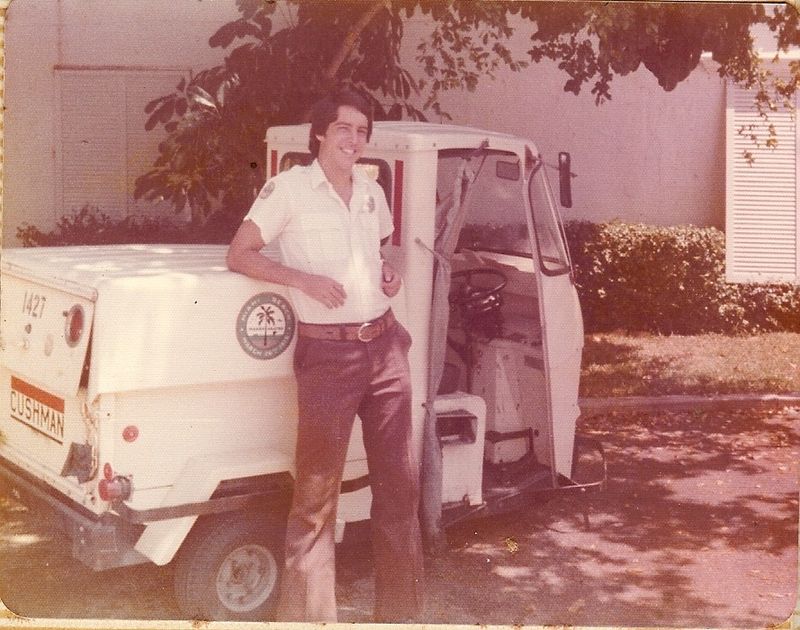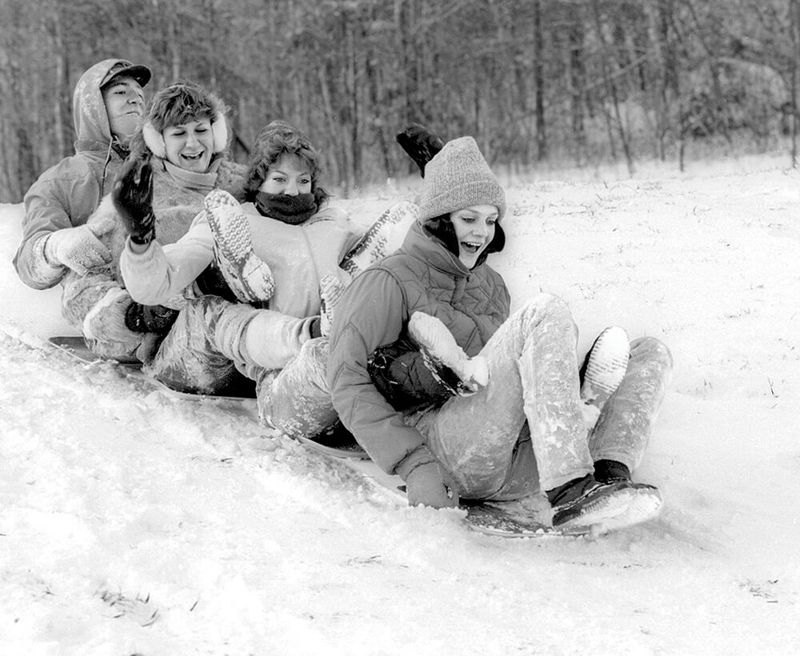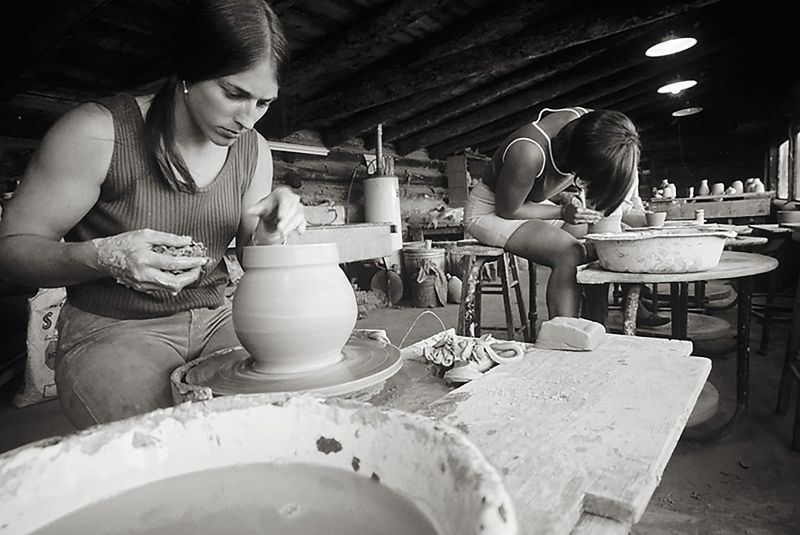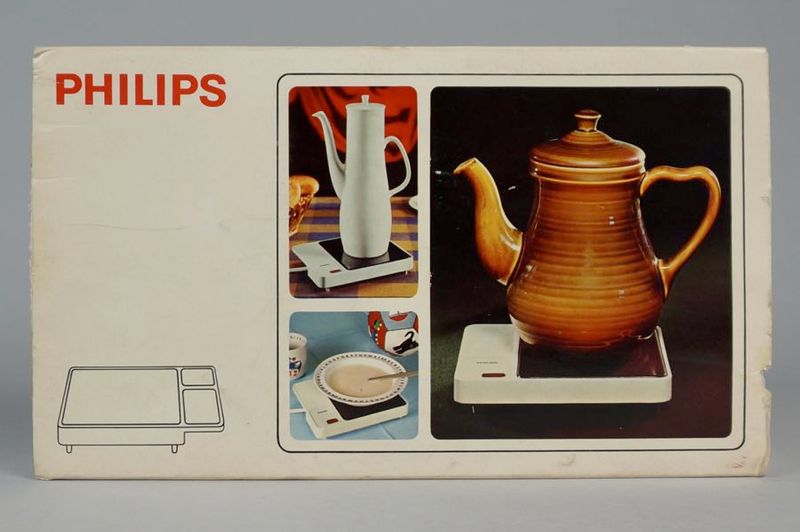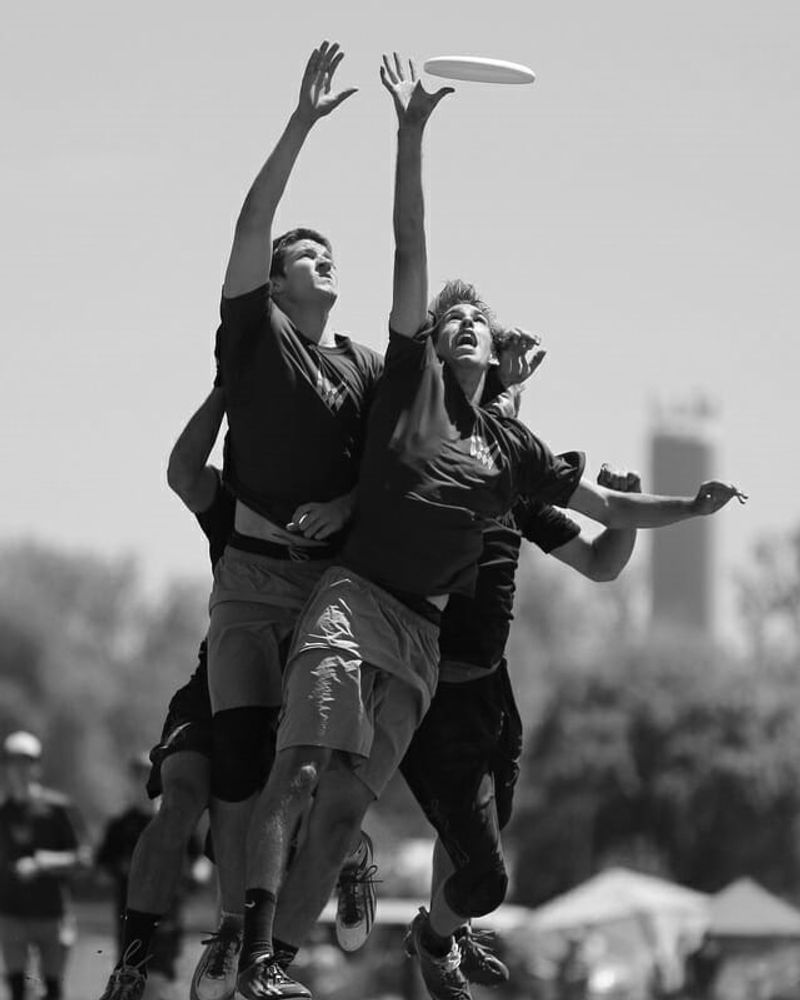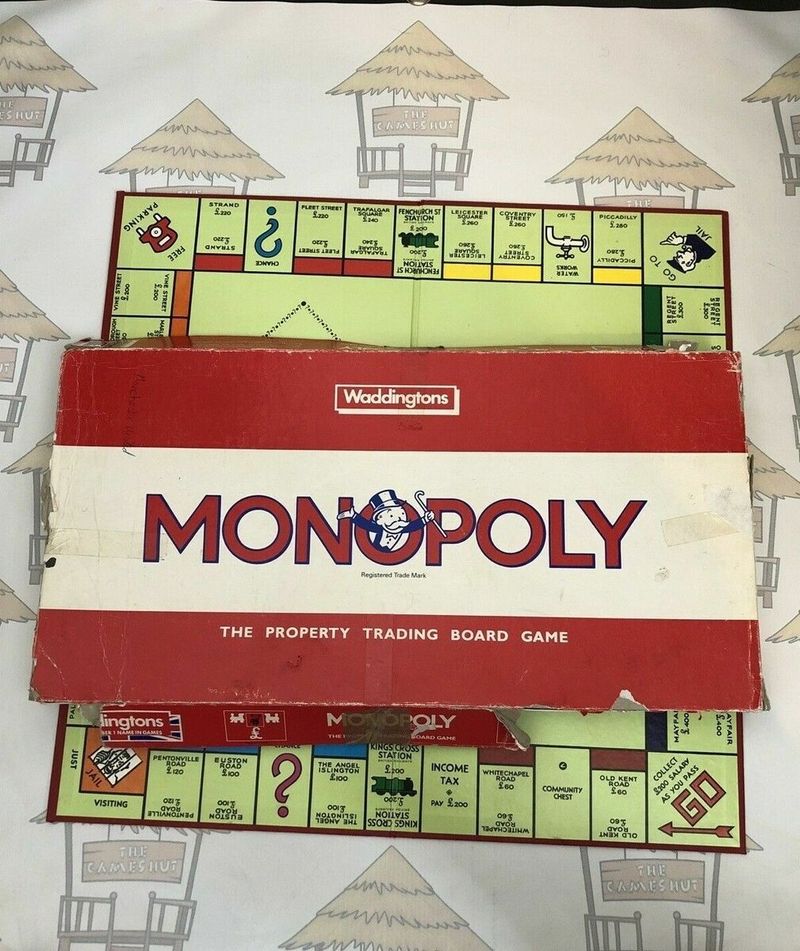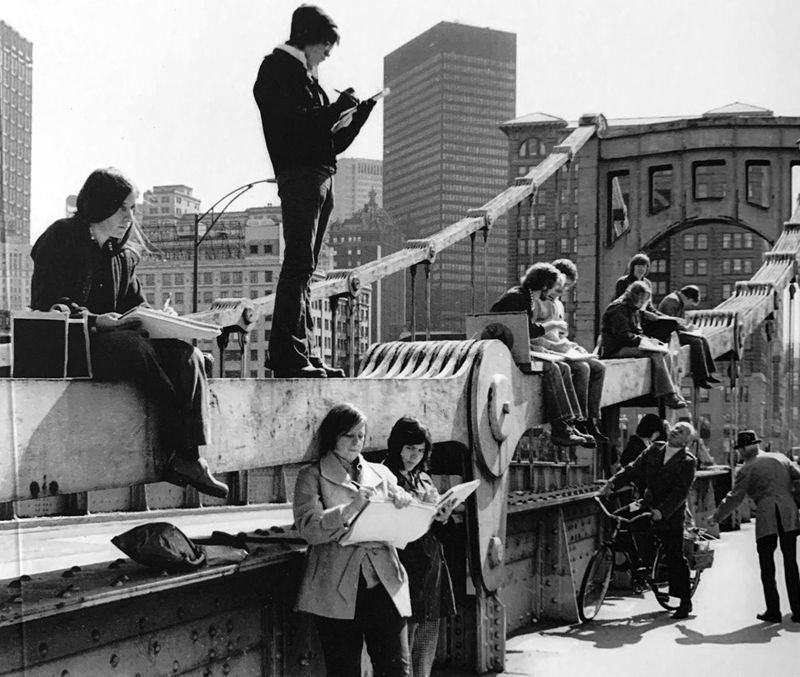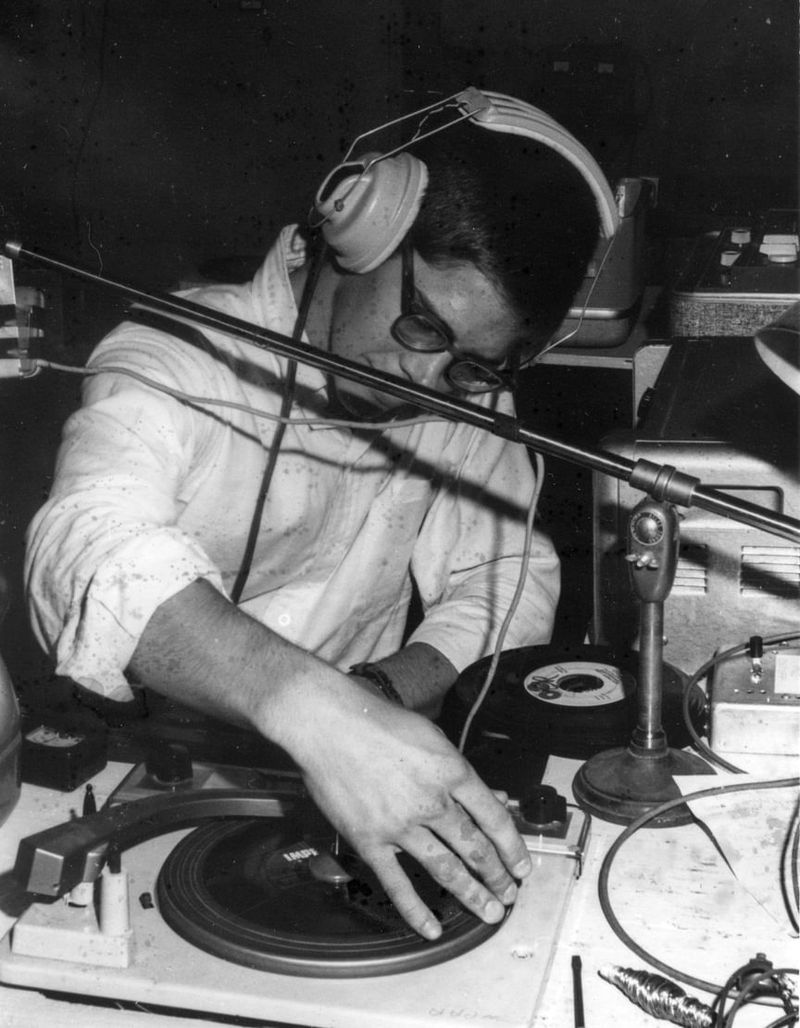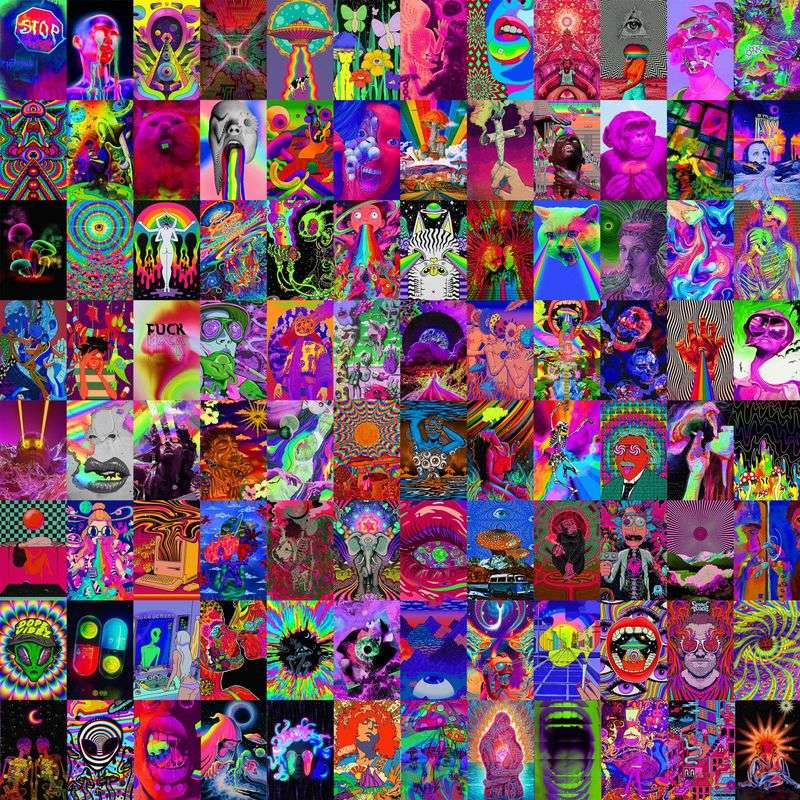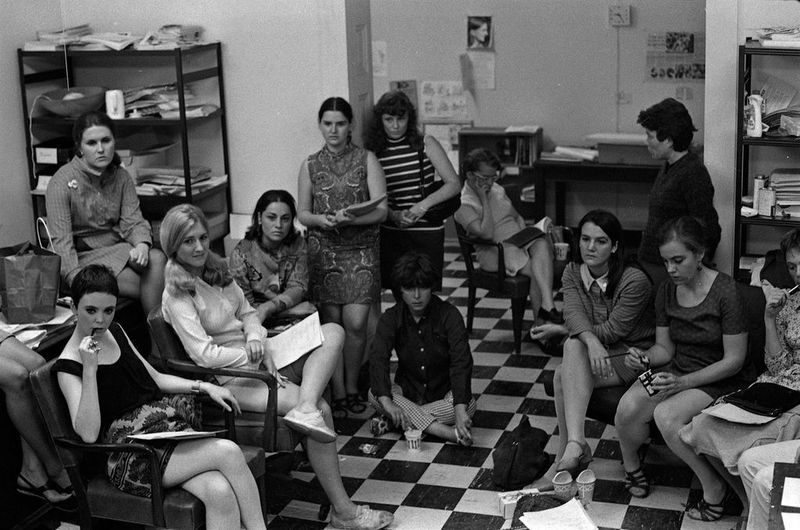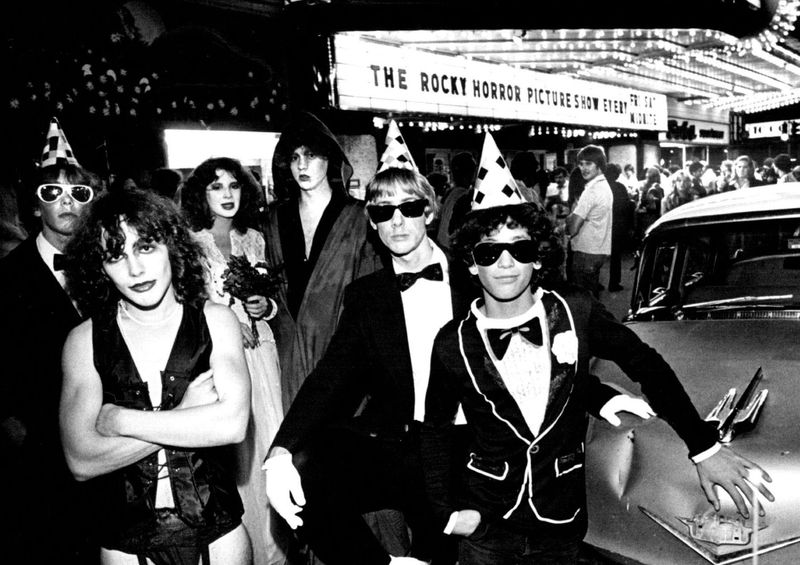College life in the 1970s was a vibrant mix of social change, cultural revolution, and unforgettable experiences. Students navigated campus during an era of protests, disco, and newfound freedoms that shaped a generation.
These 37 photos capture the essence of ’70s college life – from fashion statements to dorm room hangouts that defined an iconic decade.
1. Platform Shoes and Bell Bottoms
Students strutted across campus in platform shoes reaching dizzying heights of 4-5 inches. These fashion statements paired perfectly with bell-bottom jeans that flared dramatically from the knee down.
Campus sidewalks transformed into unofficial runways where self-expression through clothing was an art form. The bigger the bell, the better the fashion cred among peers.
2. Crowded Dorm Room Record Parties
Vinyl records spun constantly in cramped dorm rooms where twenty-plus students squeezed in to experience music together. The warm crackle of albums by Fleetwood Mac, Led Zeppelin, and Pink Floyd created the soundtrack for these intimate gatherings.
Empty beer cans collected in corners while animated debates about music raged into the night. These impromptu parties forged friendships that would last decades.
3. Typewriter Term Paper All-Nighters
The rhythmic clacking of typewriter keys echoed through dorm hallways as deadlines loomed. Students hunched over these mechanical writing machines, surrounded by crumpled paper, coffee cups, and dog-eared textbooks.
Making a typo meant starting the entire page over or employing the messy correction fluid known as White-Out. The distinctive ping of the carriage return signaled another line completed in the marathon toward morning submission.
4. Shag Carpets in School Colors
Dorm rooms transformed from institutional cells into personalized havens with the addition of thick, plush shag carpeting. Bold orange, harvest gold, and avocado green were popular choices, often matching school colors for added spirit.
Students would lounge for hours on these fuzzy floors, playing cards or sharing late-night conversations. The carpet’s deep pile effectively hid crumbs, spilled beer, and other evidence of dorm life from visiting parents.
5. Protest Signs and Peace Rallies
Campus quads became gathering grounds for passionate students wielding handmade protest signs. The early ’70s saw continued Vietnam War protests while environmental and women’s rights movements gained momentum throughout the decade.
Professors sometimes joined their students, standing shoulder-to-shoulder in solidarity. These rallies weren’t just political statements but social events where like-minded students connected, organized, and experienced the power of collective action.
6. Macramé Plant Hangers Everywhere
Spider plants dangled from intricately knotted macramé hangers in nearly every dorm window. Creating these bohemian plant holders became a popular craft, with students spending hours perfecting their knotting techniques.
The resulting jungle-like atmosphere brought life to sterile dorm rooms. Caring for these plants offered a welcome distraction from study stress, though many unfortunate specimens fell victim to extended holiday breaks.
7. Volkswagen Bus Campus Caravans
Parking lots resembled Volkswagen conventions with colorful VW buses claiming prime spots. These iconic vehicles served as more than transportation – they were mobile hangouts, weekend escape pods, and symbols of freedom.
Many sported hand-painted peace signs or psychedelic designs. For road trips to concerts or spring break adventures, nothing beat piling friends into a bus with an 8-track player pumping out tunes and windows down.
8. Phone Booth Call Home Lines
Sunday nights transformed dormitory phone booths into emotional hotspots as students lined up to call home. Armed with precious quarters and patient parents waiting by rotary phones, these weekly check-ins were the lifeline to family.
The booths offered minimal privacy, with conversations often overheard by those waiting their turn. Many students clutched small notebooks containing reverse-charge numbers to avoid the coin demand of long-distance calls.
9. Streaking Across the Quad
The streaking phenomenon peaked in 1974 when naked students dashed across campuses nationwide. What began as isolated incidents evolved into massive coordinated events, with hundreds simultaneously sprinting through spring air wearing nothing but smiles and sneakers.
Campus security rarely pursued these free-spirited runners. Local newspapers often reported these escapades with a mix of shock and amusement, sometimes accompanied by strategically censored photographs of the mass nudity.
10. Lava Lamps and Black Light Posters
Hypnotic lava lamps bubbled in corners of dorm rooms, casting psychedelic shadows across walls adorned with fluorescent posters. Under black lights, these rooms transformed into otherworldly spaces where ordinary white clothing and teeth glowed with supernatural brightness.
The combination created the perfect atmospheric backdrop for deep philosophical conversations. Students would stare mesmerized at the rising and falling blobs, finding shapes and meaning in the colorful wax movements.
11. Stadium Rock Concerts
Campus stadiums regularly hosted major rock acts, drawing thousands of students for unforgettable musical experiences. The Rolling Stones, Fleetwood Mac, and Elton John performed at universities across America, turning academic venues into temples of rock.
Smoke hovered above crowds as concert-goers passed joints freely. The relatively low ticket prices – often under $10 – made these shows accessible to most students, creating shared cultural touchpoints for entire campus communities.
12. Waterbed Dorm Room Status Symbol
Waterbed owners achieved instant social status, despite the notorious difficulty of installing these sloshing sleep surfaces in dorm rooms. The warm, undulating mattresses required special frames and heaters, plus resident advisor approval that was often circumvented.
Students boasted about therapeutic benefits while friends gathered to experience the novelty. The occasional catastrophic leak created dorm lore that lasted generations, with stories of hallways flooded and belongings floating down corridors.
13. Earth Day Celebrations
The first Earth Day in 1970 sparked annual campus traditions that continued throughout the decade. Students planted trees, organized clean-ups, and staged educational events promoting environmental awareness long before it became mainstream.
Hand-painted banners with slogans like “Save the Earth” hung from buildings. These celebrations combined serious ecological messages with festival atmospheres, featuring folk singers, vegetarian food stalls, and information booths about emerging environmental science.
14. Darkroom Photography Classes
Chemistry mixed with creativity in campus darkrooms where photography students developed film by hand. The magical moment when images appeared on blank paper under red safety lights captivated aspiring photographers.
Students spent hours in these chemical-scented spaces, carefully agitating development trays. The technical challenges created camaraderie among classmates who shared tips and tricks while waiting for their prints to dry on metal racks.
15. CB Radio Dorm Networks
“Breaker one-nine” echoed through dorms as CB radio culture infiltrated campus life. Students adopted colorful “handles” (nicknames) and communicated across campus using these citizen band radios that reached approximately 1-5 miles.
Late-night conversations bounced between buildings, creating underground social networks. The distinctive CB slang – with phrases like “What’s your twenty?” and “That’s a big 10-4” – became part of everyday campus vocabulary, spilling into classroom discussions.
16. Woodshop Furniture Making
Campus woodshops buzzed with activity as students crafted handmade furniture for their apartments and dorms. Practical arts courses taught basic carpentry skills that translated into custom bookshelves, platform beds, and record crates.
The distinct scent of sawdust permeated these creative spaces. Many students discovered lifelong hobbies in these workshops, while others developed entrepreneurial side businesses selling their wooden creations to fellow cash-strapped classmates.
17. Foosball Tournament Intensity
Student unions echoed with the distinctive clacking of foosball tables as competitive matches drew passionate crowds. This table soccer game reached peak popularity in the ’70s, with serious players developing wrist-flicking techniques that sent the ball flying at incredible speeds.
Tournament brackets posted on walls tracked campus champions. The best players achieved minor celebrity status, while heated matches occasionally erupted into disputes over “spinning” rules and proper goal scoring.
18. Bike Repair Collectives
Student-run bicycle repair collectives emerged as practical responses to the bike boom and energy crisis. These volunteer-staffed workshops occupied basement spaces where mechanical knowledge passed freely between experienced tinkerers and novice cyclists.
Tools hung from pegboards while bikes in various states of repair filled every corner. The philosophy centered on self-reliance and skill-sharing rather than profit, with many collectives operating on donation-based systems that made transportation accessible to cash-strapped students.
19. Food Co-op Bulk Buying
Student-run food cooperatives flourished as alternatives to institutional dining halls. These community-operated stores specialized in bulk grains, nuts, and natural foods before health food stores became commonplace.
Members worked shifts weighing rice into paper bags and stocking shelves with granola. The co-ops became social hubs where nutrition-conscious students gathered, sharing recipes for lentil loaf and homemade yogurt while discussing food politics and agricultural practices.
20. Outdoor Folk Music Circles
Acoustic guitars and harmonicas created spontaneous soundtracks across campus greens. Students gathered in circles, passing instruments and sharing songs by Joni Mitchell, Bob Dylan, and James Taylor as others joined in harmony.
These impromptu concerts happened regardless of weather. During warmer months, these gatherings could last from afternoon until twilight, with participants drifting in and out as class schedules allowed, creating ever-evolving musical communities.
21. Chess Club Marathons
Strategic battles unfolded across black and white boards during marathon chess sessions that stretched late into night. Campus chess clubs attracted devoted players who hunched over boards in intense concentration, sometimes playing multiple opponents simultaneously.
Speed chess matches drew spectators who watched in respectful silence. The game transcended social boundaries, bringing together diverse students who might never otherwise interact, creating unexpected friendships through their shared appreciation for this ancient game of strategy.
22. Massive Beer Can Pyramids
Engineering skills found practical application in towering pyramids of empty beer cans that showcased both consumption prowess and architectural ability. These aluminum monuments grew throughout the semester, sometimes reaching ceiling height before inevitable collapse.
Residence hall competitions pushed students to ever more impressive structures. The distinctive pull-tab cans of the era (before stay-on tabs were invented) created hazards for barefoot dorm dwellers, with the discarded metal tabs often embedded in shag carpeting.
23. Candle Making Workshops
Melted wax and creative energy combined in popular candle-making workshops held in dorm basements and craft centers. Students dipped wicks repeatedly into colorful wax or created elaborate layered candles in molds, often incorporating personal objects or symbols.
The distinctive scent of paraffin filled these creative spaces. Many of these handcrafted candles became gifts for parents or romantic partners, while others illuminated dorm rooms during late-night study sessions or power outages.
24. Library Card Catalog Quests
Research papers began with methodical searches through wooden drawers filled with alphabetized index cards. Students jotted down Dewey Decimal numbers on scrap paper before venturing into the stacks to locate physical books.
The satisfying feel of thumbing through these cards was a tactile ritual. Finding an unexpected resource felt like discovering treasure, while popular topics meant competition for limited copies, sometimes leading to book-hiding strategies in remote library corners.
25. Tie-Dye T-Shirt Parties
Vibrant swirls of color emerged from buckets of dye as students transformed plain white shirts into wearable art. Tie-dye parties spread across lawns outside dorms, with clothing lines strung between trees displaying dripping creations.
The technique involved precise rubber band placement and dye application. These gatherings combined creativity with socializing, as participants compared techniques and results while waiting for their shirts to set before the satisfying moment of untying to reveal unique patterns.
26. Pinball Wizardry Competitions
Campus game rooms resonated with the distinctive sounds of flippers slapping and bells ringing as pinball machines consumed countless quarters. Skilled players drew audiences who watched as they kept silver balls in play through masterful bumping and tilting techniques.
High score competitions created friendly rivalries between dorms. Before video games dominated, these mechanical marvels with their themed artwork and physical interaction represented the height of gaming technology, offering stress relief between classes and social connection through friendly competition.
27. Hitchhiking Between Campuses
Thumbs extended along highways connected college towns as hitchhiking provided free transportation for weekend visits between schools. Students thought nothing of standing roadside with handmade signs indicating destinations, often to visit romantic partners at neighboring institutions.
Drivers regularly stopped for young people carrying backpacks and textbooks. The practice created unexpected connections and conversations between strangers. Though considered normal then, this common ’70s transportation method seems unimaginably risky by today’s standards.
28. Cafeteria Tray Sledding
Winter snowfalls transformed campus hills into impromptu sledding courses with cafeteria trays serving as perfect single-person sleds. Students “borrowed” these sturdy plastic trays by the hundreds, creating colorful processions to the best slopes.
The smooth bottoms achieved impressive speeds on packed snow. Dining services staff generally looked the other way during these seasonal equipment loans, though some schools eventually built tray returns near popular sledding hills to recover their property.
29. Pottery Wheel Creations
Clay-covered students spent hours in campus art studios mastering the hypnotic rhythm of pottery wheels. The tactile experience of transforming spinning lumps into functional vessels provided creative balance to academic pressures.
First attempts often produced comically lopsided mugs and bowls. Success required a delicate touch and patience through multiple stages – throwing, trimming, firing, and glazing – with many pieces lost to cracks or kiln accidents before students achieved their handmade tableware sets.
30. Dorm Room Hot Plate Cooking
Forbidden hot plates hidden in closets allowed culinary experiments beyond dining hall offerings. Students became masters of one-pot meals, preparing ramen with added vegetables or grilled cheese sandwiches pressed between textbooks wrapped in foil.
The distinctive smell of cooking often gave away these contraband kitchens. Elaborate systems of lookouts warned of approaching resident advisors, with hot plates quickly unplugged and hidden under beds during inspections, creating a cat-and-mouse game between hungry students and housing regulations.
31. Frisbee Freestyle Exhibitions
Plastic discs soared across quads as frisbee evolved from casual tossing to elaborate freestyle routines. Players incorporated behind-the-back catches, under-the-leg throws, and gymnastic moves that drew appreciative crowds between classes.
The sport symbolized the decade’s free-spirited attitude. Ultimate Frisbee teams formed at colleges nationwide during this period, creating organized competitions from what began as spontaneous play, while freestyle exhibitions showcased individual creativity and physical prowess.
32. Endless Monopoly Tournaments
Rainy weekends disappeared into marathon Monopoly games that sometimes continued for days. Property trading and hotel building became serious business as players developed ruthless strategies to bankrupt their friends.
House rules varied by dorm, creating heated debates about Free Parking jackpots and auction procedures. Games often began Friday evening and continued through Sunday, with players dropping in and out as schedules allowed, leaving handwritten notes about property holdings when forced to attend actual classes.
33. Watercolor Landscape Classes
Art students perched on portable stools across campus, capturing scenes with watercolor brushes and portable paint sets. These outdoor painting sessions created colorful interpretations of familiar buildings and landscapes that often ended up decorating dorm walls.
Professors circulated among students, offering individual guidance. The peaceful activity attracted curious onlookers who would pause to watch images emerge on paper, providing a public demonstration of artistic process and creating a momentary connection between the creators and campus passersby.
34. Radio Station DJ Shifts
Campus radio stations operated around the clock with student DJs developing on-air personas between playing vinyl records. These low-power FM stations became cultural tastemakers, introducing listeners to underground music rarely heard on commercial radio.
Late-night shifts were particularly coveted for creative freedom. Broadcasting from basement studios filled with record libraries, student DJs learned technical skills while connecting with unseen audiences through microphones, creating community through shared musical discovery and between-song commentary that reflected campus life.
35. Psychedelic Poster Collages
Dorm walls disappeared beneath layers of vibrant posters collected from concerts, head shops, and campus events. These paper collages expressed personal identity while covering institutional cinder blocks with psychedelic colors and mind-bending imagery.
Black light reactive inks made certain elements glow under special lighting. The most dedicated decorators created immersive environments by extending their collections across ceilings, transforming standard rooms into personalized art installations that reflected musical tastes, political views, and aesthetic sensibilities.
36. Feminist Consciousness-Raising Groups
Women gathered in dorm lounges and off-campus apartments to share personal experiences that revealed patterns of gender inequality. These consciousness-raising sessions followed a structure where each participant spoke uninterrupted about specified topics like body image or career aspirations.
The groups created safe spaces for honest discussion. Many participants discovered feminism through these intimate gatherings, connecting personal challenges to broader social issues and developing solidarity that translated into campus activism for women’s studies programs, reproductive rights, and equal athletic opportunities.
37. Midnight Movie Screenings
Campus film societies transformed lecture halls into theaters for late-night screenings of cult classics and foreign films. “Rocky Horror Picture Show” created participatory rituals while art house films introduced students to global cinema long before streaming services existed.
Projectionists became skilled at handling massive film reels. These communal viewings created shared cultural references among attendees, with animated discussions continuing long after screenings ended, sometimes relocating to all-night diners where debates about symbolism and directorial intent continued over coffee.

